A 50-Year Vision: Warwick Rotary and the Virginia Living Museum
By thevlm In VLM Through the YearsFrom paint brushes and construction plans to safaris and fundraisers, the Warwick Rotary Club has been an ever-present supporter of the Virginia Living Museum since its inception.
Inspired by a Rotary member’s dream for a nature center in Hampton Roads, in the 1960s the Warwick Rotary developed and supported the Museum as it grew and flourished. And the club still supports the Virginia Living Museum today.
A Rotarian’s Vision
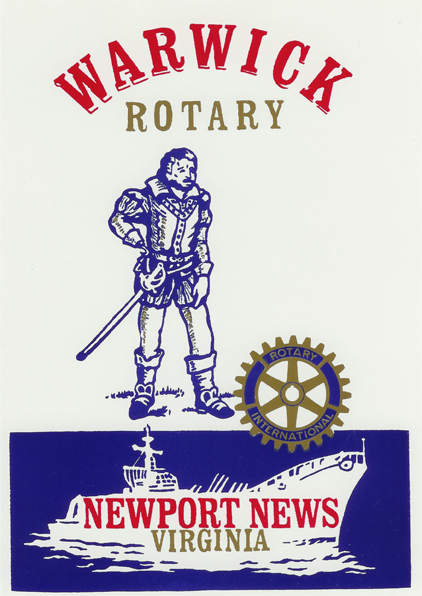

The Warwick Rotary has played an integral role in the Virginia Living Museum’s history since its inception.
The Museum came to life through the vision of Harry Wason, who served as the Warwick Rotary Club’s 22nd president from 1966 to 1967.
“It started with my dad educating me on nature when I was a young boy,” said Wason. “I give credit to my father for instilling in me an appreciation of nature. I always kept that with me.”
In the 1950s, Wason visited a nature museum that he wished to bring back to Newport News. “I saw the Charlotte Nature Museum and was very impressed with it,” he said, “so I said to myself, ‘one day I would like to create one.’”
With the goal of a nature center always in his mind, in 1963 Wason turned to his fellow Rotarians for help.
Recognizing the importance of conservation and education, the Warwick Rotary Club embraced Wason’s dream. Partnering with the Junior League of Hampton Roads, the Rotary dedicated its efforts to fundraising, planning and working with local officials to establish the center.
The Rotary’s motto “Service Above Self” shone through the Museum’s inception. Beginning with a series of fundraising activities in 1965, the Warwick Rotary pledges supported the nature center’s initial campaign by donating $11,500.
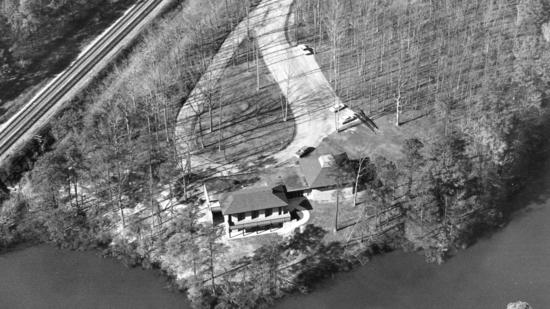

Aerial look at the Peninsula Junior Nature Museum and Planetarium in 1967. [Photo by Jim Livengood/Daily Press]
“We got the land at a dollar year, which I thought was a pretty good deal,” Wason said—a rate the Museum still pays every year.
After swift fundraising and community rallying from the Warwick Rotary, Virginia Gov. Mills E. Godwin Jr. presided over the opening of the Junior Nature Museum and Planetarium on Nov. 13, 1966. Warwick Rotarians were in attendance, finally seeing Wason’s vision come to life.
Rotary’s “Service Above Self”
In its early days the Museum depended heavily on the help of volunteers from the Rotary and other groups. As a non-profit, the Museum appreciated the Warwick Rotary’s continued support as it grew to serve Newport News and the surrounding communities.
Two years after its opening, the Museum underwent its first expansion through the volunteer efforts of the Warwick Rotary. Rotarians donated materials and time to construct a 30-square-foot shell building behind the Museum’s planetarium that would serve as a workshop and storage space for the growing Museum. Just a few years later, the Warwick Rotary contributed more than $15,000 to the nature center’s new aquarium.
Shortly afterwards, the Museum faced an even bigger expansion.
Recognizing the importance of space education, from 1974 to 1975 the Museum added an observatory, complete with a telescope and observation instrument. Led by Bobby Lawson, a Warwick Rotarian and owner of a local construction company, the Rotary donated funds and helped construct the Museum’s newest feature.
“An early project I was involved in was the addition to the original building,” said Willard Hoskins, who joined the Warwick Rotary in 1970 and helped build the observatory. “Lawson had his foremen telling us what to do.”
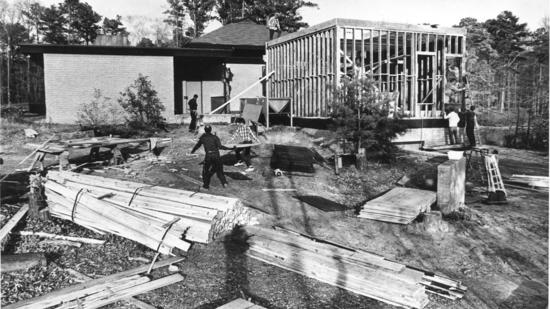

The Warwick Rotary Club constructs the Museum’s observatory in 1974. [Photos by Joe Fudge/Daily Press]
To help sustain the center as it continued to grow, in the 1980s the Warwick Rotary hosted a series of annual wine and cheese tasting events to support Museum programs. The biggest wine and cheese fundraiser took place in 1983, during which the Warwick Rotary rented the Virginia Patriot, a local cruise boat, to hold the event.
Following the success of the annual fundraisers, the Warwick Rotary pledged $1,500 per year from 1984 to 1987 to support the Museum. In addition to annual pledges, the Rotary raised funds to replace the observatory’s roof, updating its earlier construction project.
Supporting a Living Museum
With nearly two decades dedicated to the Museum by the 1980s, it’s no surprise that the Warwick Rotary was involved in the Museum’s biggest transformation to date: its transition to become the Virginia Living Museum.
Led by Executive Director Bob Sullivan, in 1987 the Museum underwent a $3.2 million renovation and opened as the first living museum east of the Mississippi River, combining elements of a native wildlife park, science museum, aquarium, botanical garden and planetarium.
“I’ve seen it grow from the original structure to the expanded structure, to a whole new building,” explained Hoskins.
And throughout the Museum’s transition, the Warwick Rotary provided volunteers and fundraising support. In 1993 the Rotary established a $25,000 endowment fund to support Museum programs as the Museum continued to grow in annual visitors.
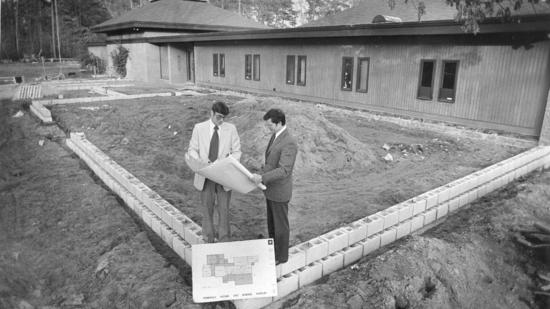

Virginia Living Museum Executive Director Bob Sullivan and Warwick Rotary President Willard Hoskins at the Peninsula Nature and Science Center in 1980. [Photo by The Daily Press]
From field trips to fundraising, Rotarians see their support of the Museum as a special ongoing project.
“Helping the Museum gives the work of the Rotary a special incentive to be successful since it’s been one of the Museum’s outstanding connections,” said Hoskins. As president of the Warwick Rotary from 1979 to 1980, Hoskins led several fundraising and volunteer efforts for the Museum, including a project to paint the Museum’s interior.
“In addition to fundraising, [Rotarians] literally built the place on their own with paintbrushes and hammers,” said Randy R. Ray, who served as executive director of the Museum in the 1990s. “It truly grew out of the efforts of the community.”
Always looking for a construction project, in 2001 the Warwick Rotary dedicated time and effort to build an outdoor amphitheater and a tree bench on the Museum’s grounds.
When the Museum launched a campaign for a new $22 million building, the Warwick Rotary Club pledged $100,000 over a two-year period. The club raised $75,000 in the first year, including a $5,500 grant from Rotary District 7600, which includes the Warwick, City Center, Oyster Point, Virginia Peninsula, Hampton and Historic Triangle Rotary Clubs.
With help from Rotarians throughout southeastern Virginia and many other businesses and donors, the Museum opened a new 62,000-square-foot facility in 2004. The new building offered the Museum space to exhibit more than 750 animals representing more than 100 species in a series of galleries reflecting the ecosystems found in Virginia.
“The community believed in what we were doing,” said Gloria Lombardi, the executive director who oversaw the expansion. “The Rotary and the Junior League built this Museum and worked together to get it started and keep it going.”
A 50-Year Relationship
As the Museum celebrates its 50th anniversary, the Warwick Rotary can look back on 50 years of service. From its inception to its 50th, the Museum has thanked the Rotary for unwavering support.
To commemorate this relationship, in 1995 the Virginia Living Museum presented its first Golden Paw Award to the Warwick Rotary on the club’s 50th anniversary. The award was established to recognize outstanding service and support of the Museum.
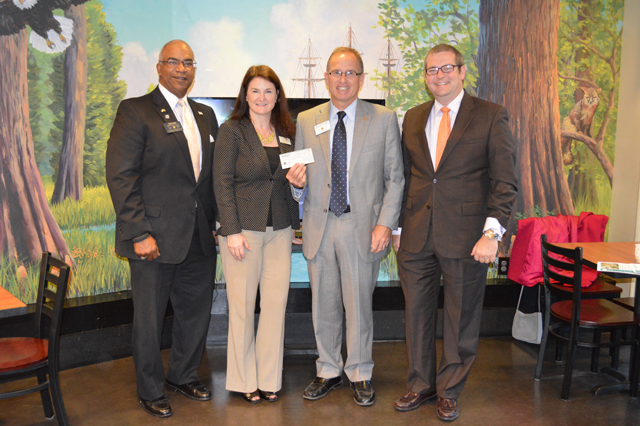

Page Hayhurst, the Virginia Living Museum’s executive director, accepts a donation from Rotary District 7600 for the Museum’s new Dinosaur Discovery Trail. Pictured (left to right) are Kevin Lyles, City Center Rotary president; Bill Pollard, past District governor and former District Rotary Foundation chair; and Alan Witt, Warwick Rotary president.
And this service and support is certainly evident in the Museum’s 50th year. To help the Museum establish its new Dinosaur Discovery Trail, Rotary District 7600 donated a $6,000 grant and agreed to sponsor the Pteranodon on the trail. Rotarians not only contributed money, they also held a work day to help put the finishing touches on the trail before opening day.
Opening in October 2016, the Dinosaur Discovery Trail is a $500,000 permanent exhibit that showcases 16 different species of dinosaurs and offers a Paleo camp and dig pits for amateur paleontologists.
“Warwick Rotary founded the Museum and throughout our 50 years the club has been involved in supporting, volunteering and advocating for us. We are grateful for their support and the participation of other Rotary clubs and Rotarians for the Dinosaur Discovery Trail exhibit and our educational mission,” said Virginia Living Museum Executive Director Page Hayhurst.
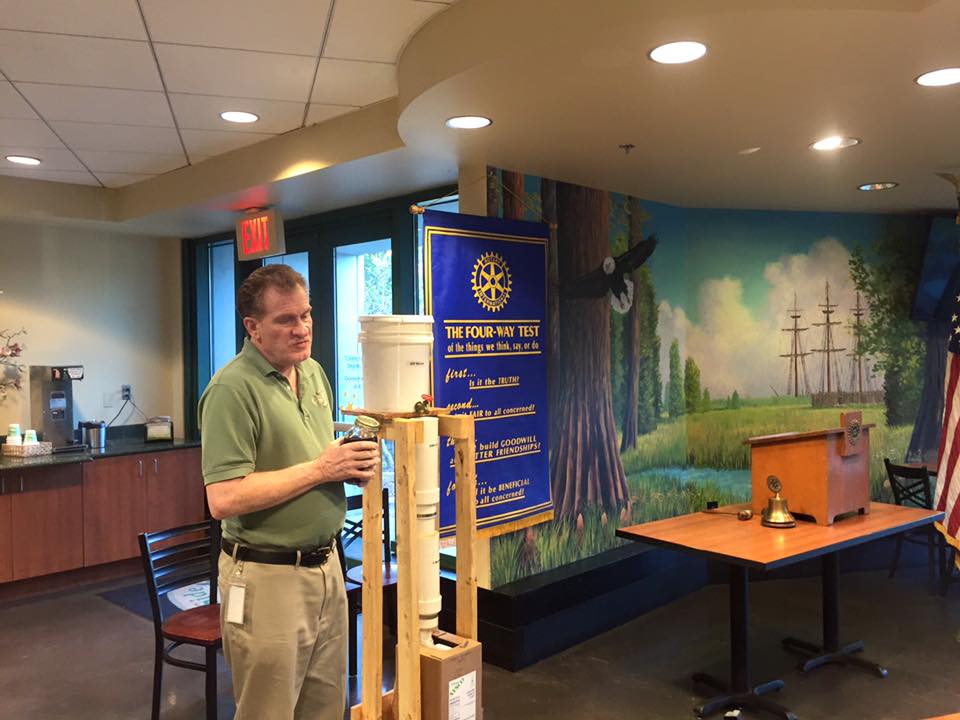

George Mathews, the Virginia Living Museum’s curatorial director, talks to the Warwick Rotary about Earth Day at the club’s weekly meeting held at the Wild Side Café.
Today, the Warwick Rotary maintains a permanent position on the Virginia Living Museum’s board of directors and annually contributes to the Museum. The club hosts its weekly meetings at the Museum’s Wild Side Café, always keeping close to its long-term project.
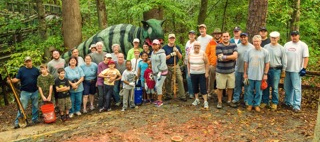

Members of the Warwick, City Center, Hampton and Oyster Point Rotary Clubs plus family members and friends spread mulch in the playground area and washed the 16 life-like dinosaurs prior to the opening of the Dinosaur Discovery Trail on Oct. 15, 2016.






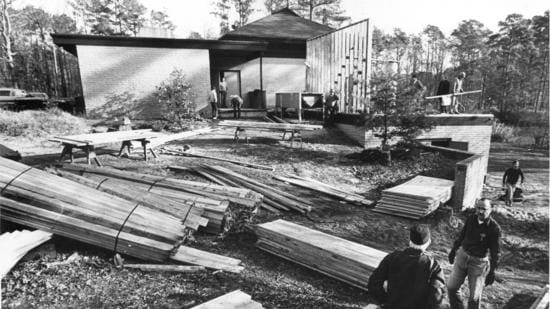
No Comment
Sorry, the comment form is closed at this time.